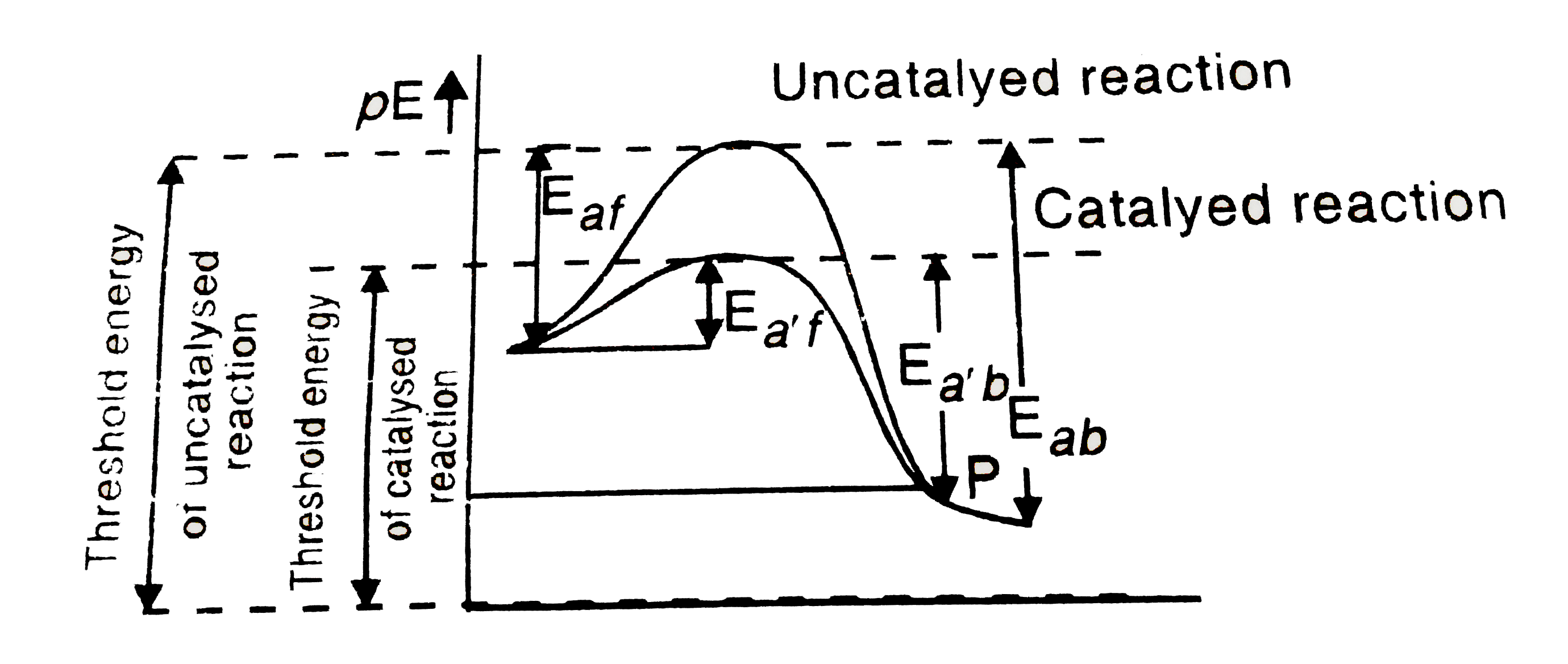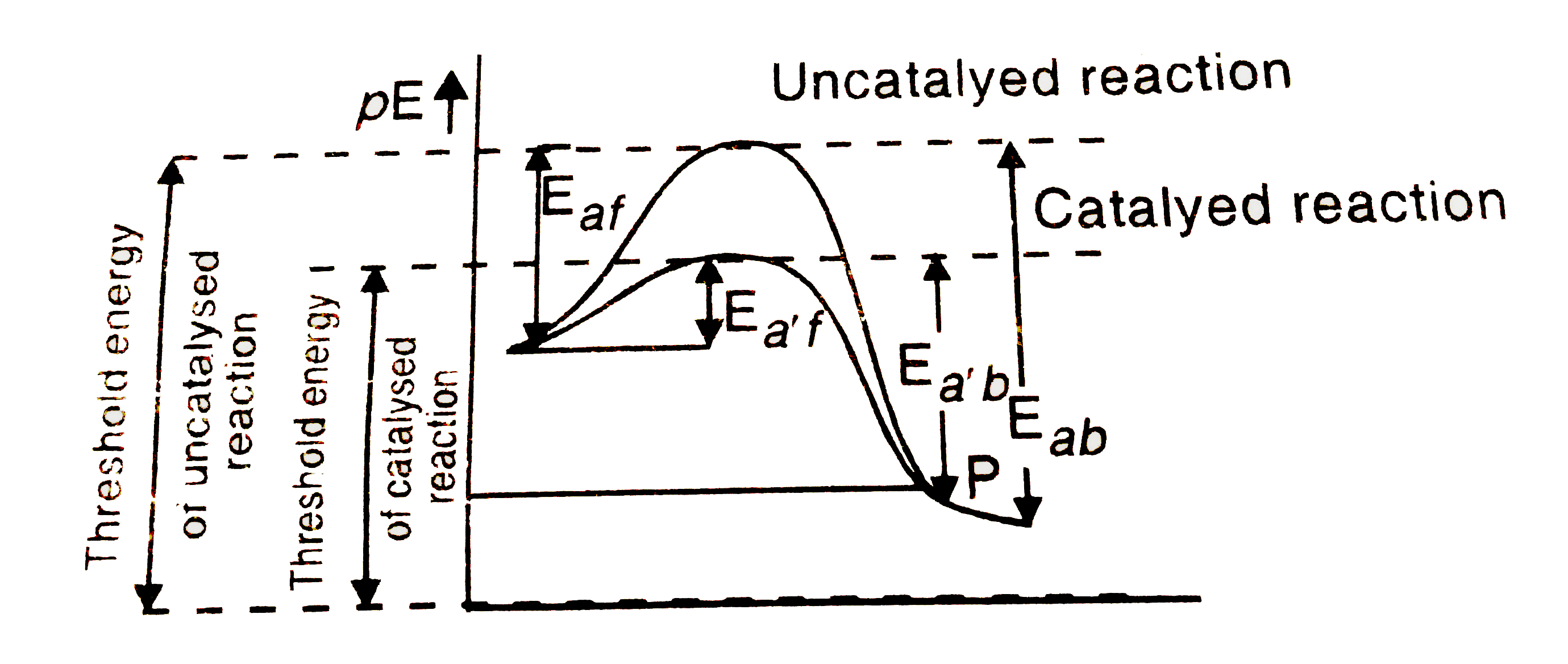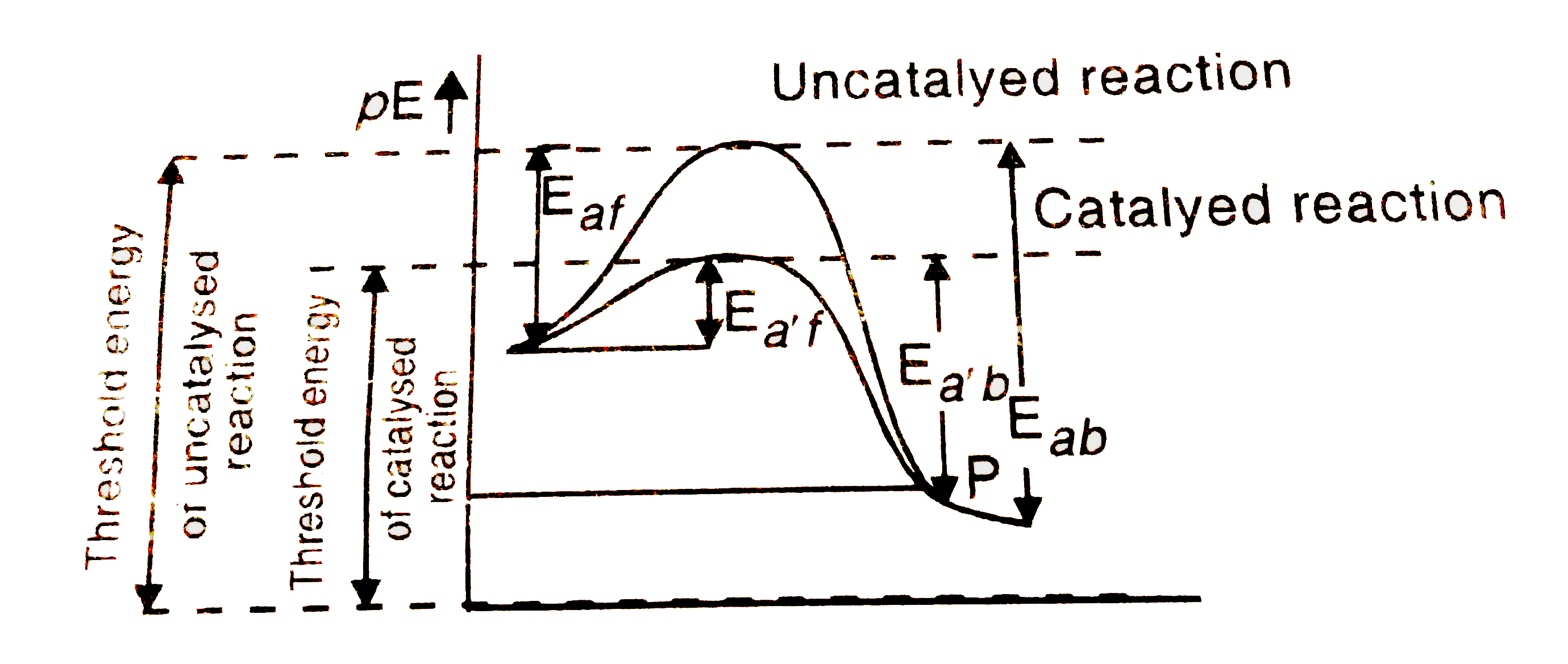From the above three energy profile diagrams find out which of the above irreversible reactions gives maximum yield within a given period of time ? Justify. [Consider that the initial concentration of the reactants and temperature is same for all the reactions.]
![From the above three energy profile diagrams find out which of the above irreversible reactions gives maximum yield within a given period of time ? Justify. [Consider that the initial concentration of the reactants and temperature is same for all the reactions.]](https://d10lpgp6xz60nq.cloudfront.net/physics_images/PS_CHM_X_C06_E06_002_Q01.png)
(i) role of activation energy in the formation of product
(ii) comparison of activation enregy of the three reactions.
(iii) relation between activation energy and yield
Topper's Solved these Questions
- CHEMICAL KINETICS AND EQUILIBRIUMBOOK - PEARSON IIT JEE FOUNDATIONCHAPTER - CHEMICAL KINETICS AND EQUILIBRIUMEXERCISE - Level 2
22 Videos
- ATOMIC STRUCTURE BOOK - PEARSON IIT JEE FOUNDATIONCHAPTER - ATOMIC STRUCTURE EXERCISE - LEVEL-3
8 Videos
- CHEMICAL BONDING BOOK - PEARSON IIT JEE FOUNDATIONCHAPTER - CHEMICAL BONDING EXERCISE - Level 3
10 Videos
Similar Questions
For the reaction A+B→ Products, the following initial rates were obtained at various given initial concentrations.
 ltrbgt Write rate law and find the rate constant for the above reaction.
ltrbgt Write rate law and find the rate constant for the above reaction.
View SolutionNiki, Nita and Nitu study in the 9th standard. They were carrying out three different reversible reactions. When the reaction attained their state of equilibrium, they measured the concentration of each gas present in the equilibrium mixture and calculated the Kc value of each reaction. They were provided with the energy profile diagrams of each reaction. From this information, they prepared the following table.
From the data given in the table, calculate which reaction will take the maximum time to reach equilibrium and which one will give the maximum yield.

View Solution
Knowledge Check
Temperature pressure and molar concentration are the three factors which can disturb the equilibrium in a reversible reaction. Their effect is governed by Le Chatelier's principle . Whereas high concentration of the reactants always favours the formation of the products irrespective of its nature the effect of temperature and pressure depends upon the nature of the reaction . pressure does not disturb the equilibrium point in a reaction in which the reactants and products have same number of moles in the gaseous state.
For a reaction
CO(g)+H2O(g)⇔CO2(g)+H2(g)
at a given temperature the equilibrium amount of CO2
(g) can be increased byAadding a catalystBadding and inert gasCdecreasing the volume of the containerDincreasing the amount of CO (g).Which or the following is correct for the first order reaction ?
2N2O5(g)→4NO2(g)+O2(g)
(i) The concentration of the reactant decreases exponentially with time.
(ii) The half life of the reaction decreases with increaseing temperature.
(iii) The half life of the reaction depends on the initial concentration of the reactant.
(iv) The reaction proceeds to 99.6% completion in eigth half-life duration.A(i), (ii), (iv)B(i), (iv)Conly (iv)Dinly (i)The energy profile diagrams are very important tool through which, we predict lot of things, like the amount of activation energy of the catalysed and uncatalysed reaction as well as for the backward reaction and forward reaction. Thershold energy of the catalysed and uncatalysed reaction. The graphs representing the energy profile diagram for catalysed and uncatalysed reactions are given below :

The graph of the lower energy barrier is the energy profile diagram for the catalysed reaction adn of the higher barrier is the energy profile diagram of uncatalysed reaction.
From the graph, it is clear that EafandEab are the activation energy of the respectively. EafandEab are the activation energy of the catalysed forward and backward reaction respectvely
The reaction which occurs by absorption of heat is known as endothermic reaction and by release of heat is known as exothermic reaction
For exothermic reaction, ΔH is negative and for endothermic reaction, ΔH is positive
From Arrhenius equation, we know that k=Ae−Ea/RT where k is rate constant which signifies effective number of collisions. A is known as Arrehnius constant, or maximum rate constant of frequency factor which signifies maximum number of collisions with proper orientation of reacting species per mole per second.
The catalysed reaction occurs at 500 K and the uncatalysed reaction occurs at 800 K in such way so that the rate of catalysed reaction and uncatalysed reaction becomes equal as well as the catalyst lower down the energy barrier by 60 J.
Answer the following questions on the basis of above paragraph
From the given above information, what will be threshold energy for the catalysed reaction. If the normal energy of the reactant is 40 JA170 JB200 JC140 JD180 J
5A→Product
In above reaction, half-life period is directly proportional to initial concentration of reactant. The initial rate of reaction is 400 mol lit−1 min−1.
View Solution5A→Product
In above reaction, half-life period is directly proportional to initial concentration of reactant. The initial rate of reaction is 400 mol lit−1 min−1.
View SolutionThe energy profile diagrams are very important tool through which, we predict lot of things, like the amount of activation energy of the catalysed and uncatalysed reaction as well as for the backward reaction and forward reaction. Thershold energy of the catalysed and uncatalysed reaction. The graphs representing the energy profile diagram for catalysed and uncatalysed reactions are given below :

The graph of the lower energy barrier is the energy profile diagram for the catalysed reaction adn of the higher barrier is the energy profile diagram of uncatalysed reaction.
From the graph, it is clear that EafandEab are the activation energy of the respectively. EafandEab are the activation energy of the catalysed forward and backward reaction respectvely
The reaction which occurs by absorption of heat is known as endothermic reaction and by release of heat is known as exothermic reaction
For exothermic reaction, ΔH is negative and for endothermic reaction, ΔH is positive
From Arrhenius equation, we know that k=Ae−Ea/RT where k is rate constant which signifies effective number of collisions. A is known as Arrehnius constant, or maximum rate constant of frequency factor which signifies maximum number of collisions with proper orientation of reacting species per mole per second.
The catalysed reaction occurs at 500 K and the uncatalysed reaction occurs at 800 K in such way so that the rate of catalysed reaction and uncatalysed reaction becomes equal as well as the catalyst lower down the energy barrier by 60 J.
Answer the following questions on the basis of above paragraph
From the above information given inthe compreshension, if the normal energy of the reactant is 50 J and that of the product is 20 J. then what will be the activation energy of the uncatalysed backward reaction ?
View SolutionThe energy profile diagrams are very important tool through which, we predict lot of things, like the amount of activation energy of the catalysed and uncatalysed reaction as well as for the backward reaction and forward reaction. Thershold energy of the catalysed and uncatalysed reaction. The graphs representing the energy profile diagram for catalysed and uncatalysed reactions are given below :

The graph of the lower energy barrier is the energy profile diagram for the catalysed reaction adn of the higher barrier is the energy profile diagram of uncatalysed reaction.
From the graph, it is clear that EafandEab are the activation energy of the respectively. EafandEab are the activation energy of the catalysed forward and backward reaction respectvely
The reaction which occurs by absorption of heat is known as endothermic reaction and by release of heat is known as exothermic reaction
For exothermic reaction, ΔH is negative and for endothermic reaction, ΔH is positive
From Arrhenius equation, we know that k=Ae−Ea/RT where k is rate constant which signifies effective number of collisions. A is known as Arrehnius constant, or maximum rate constant of frequency factor which signifies maximum number of collisions with proper orientation of reacting species per mole per second.
The catalysed reaction occurs at 500 K and the uncatalysed reaction occurs at 800 K in such way so that the rate of catalysed reaction and uncatalysed reaction becomes equal as well as the catalyst lower down the energy barrier by 60 J.
Answer the following questions on the basis of above paragraph
From the given above information what will be the threshold energy for the uncatalysed reaction, if the normal energy of the reactant is 40 J.
View SolutionThe energy profile diagrams are very important tool through which, we predict lot of things, like the amount of activation energy of the catalysed and uncatalysed reaction as well as for the backward reaction and forward reaction. Thershold energy of the catalysed and uncatalysed reaction. The graphs representing the energy profile diagram for catalysed and uncatalysed reactions are given below :

The graph of the lower energy barrier is the energy profile diagram for the catalysed reaction adn of the higher barrier is the energy profile diagram of uncatalysed reaction.
From the graph, it is clear that EafandEab are the activation energy of the respectively. EafandEab are the activation energy of the catalysed forward and backward reaction respectvely
The reaction which occurs by absorption of heat is known as endothermic reaction and by release of heat is known as exothermic reaction
For exothermic reaction, ΔH is negative and for endothermic reaction, ΔH is positive
From Arrhenius equation, we know that k=Ae−Ea/RT where k is rate constant which signifies effective number of collisions. A is known as Arrehnius constant, or maximum rate constant of frequency factor which signifies maximum number of collisions with proper orientation of reacting species per mole per second.
The catalysed reaction occurs at 500 K and the uncatalysed reaction occurs at 800 K in such way so that the rate of catalysed reaction and uncatalysed reaction becomes equal as well as the catalyst lower down the energy barrier by 60 J.
Answer the following questions on the basis of above paragraph
From the above information givenin comprehension as well as from question no. 4, what will be the value of activation energy of the calalysed backward reaction ?
View Solution
